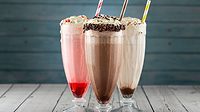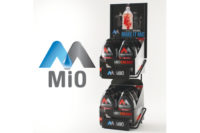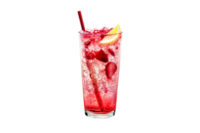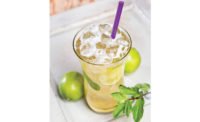Whether overcoming residuals from the economic recession or more immediate factors, the foodservice channel has faced its share of challenges in recent years. “In the three years following the worst days of the global financial crisis, consumer foodservice demand remained split between higher-income markets, where top-line growth was either anemic or negative, and emerging markets, which continue to see double-digit annual growth in many categories,” says Dana LaMendola, beverage analyst for Euromonitor International, Chicago.
|
Joe Pawlak, senior vice president of Technomic Inc., Chicago, notes that the channel also has dealt with more recent factors, such as a colder than average winter.
“Since the beginning of the year, foodservice has been in a little bit of a slump,” he says. “The brutal winter weather that most of the country experienced over the first three months caused many consumers to stay at home and not brave the elements to get their favorite foods and beverages from restaurants and other venues. As we transition into summer, however, we are starting to see some strengthening of the business, but we seem to still be digging out from the first few months of the year.”
Mike Ginley, partner with NextLevel Marketing, Westport, Conn., also acknowledges the channel’s challenges, but notes that beverages, which typically account for only 15-20 percent of sales but 50 percent or more of total profits, have been an upside for the channel.
“Beverage sales have been keeping pace or exceeding total foodservice growth, and given their profitability, we see more operators enhancing their beverage programs to drive traffic and profit,” he says.
Euromonitor’s LaMendola adds that beverages have become a focal point for channel operators to increase traffic flow. “Beverages have moved to center stage in the post-recession years as a result of slowing traffic in key markets, the need for widespread appeal in markets with diverse populations, and the near-constant need for foodservice players worldwide to gain access to new dayparts, new consumer segments, and new potential dining occasions,” she says.
Premium options
Because of the high margins that can be accrued from beverage sales, foodservice operators are exploring a number of avenues to entice beverage purchases.
“In beverages, just as in other menu items, consumers want variety in products and flavors,” LaMendola says. “In foodservice, traffic flows to those operators [who are] able to provide customers with the right combination of drink options in terms of breadth, depth and dayparts. Drinks also have branding benefits. High-end coffee can be the first step in elevating a fast-food concept, and juice-based drinks lend a healthier positioning.”
Echoing the high-end coffee concept, Rockville, Md.-based Packaged Facts stated in its April report “Coffee and Ready-to-Drink Coffee in the U.S.: Retail and Foodservice” that coffee sales at foodservice outlets will steadily grow during 2014-2016 due to enhanced breakfast platforms and coffee price increases from “premium” coffees.
Technomic’s Pawlak adds that premium products have altered the foodservice landscape. “In the past, beverages were lower-priced items on the menu that consumers purchased as a complement to their meals,” he says. “Today, consumers go into foodservice operations just to purchase these items as snacks or as treats, and the price points are much higher than the traditional menu items that consumers are conditioned to purchase in restaurants. The higher price points result in higher profits for operators, and just about every major operator, especially within the limited service sector, is involved or getting involved in these specialty beverages.”
NextLevel Marketing’s Ginley also notes the accretive benefit premium products can bring to the foodservice channel. “Premium, alcohol-free products like iced coffees, specialty teas, smoothies and gourmet sodas are capturing a larger share of the alcohol-free menu space as they play a key role in driving beverage profitability,” he says. “Unlike fountain drinks or tap water, these premium products are sold at premium prices and, perhaps most importantly, they are single-serve products with no free refills.”
Adding some variety
Although premium offerings have helped stimulate the foodservice channel, established categories like carbonated soft drinks (CSD) have faced some headwinds.
“The ongoing decline in popularity of carbonates, both on- and off-trade, has been one of the most important beverage trends of the decade,” Euromonitor’s LaMendola says. “Despite strong growth in some emerging markets, the category has seen growth slow significantly worldwide, with sales set to stagnate or decline in most major developed markets over the next five years.”
Despite these challenges, major CSD players have found a way to bring excitement and innovation to the beverage segment and foodservice outlets.
PepsiCo Inc., Purchase, N.Y., announced earlier this year the launch of Pepsi Spire, a portfolio of innovative fountain dispensers. Consisting of three versions — 1.1, 2.0 and 5.0 — the Pepsi Spire features touchscreen fountain unit models that dispense carbonated brands like Pepsi, Mountain Dew and Sierra Mist as well as non-carbonated brands including Brisk Iced Tea and SoBe Lifewater as well as an assortment of zero-calorie flavor shots.
The 1.1 and 2.0 versions are countertop, self-service units and dispense 40 and 500 beverage combinations, respectively, while the 5.0 version is available in countertop and free-standing units and dispenses 1,000 beverage combinations. The 2.0 and
5.0 versions also feature smart technology to communicate with PepsiCo which beverage customizations are most popular.
The Coca-Cola Co., Atlanta, which launched its interactive fountain innovation the Coca-Cola Freestyle machine in 2009, also has built upon its fountain platform. The company has expanded its dispenser lineup to include three countertop models. Two of the models are designed for medium-volume locations and able to dispense 80 different beverage choices. The third unit is suited for break rooms and cafes and features 35 drink options.
The Coca-Cola Co. also enhanced the “Create Your Own Mix” feature on the Coca-Cola Freestyle app. The smart technology, available on Android and Apple devices, allows consumers to tap and drag three different flavor options from more than 100 choices and adjust the percentage of each mix. Consumers can then scan the QR code to connect with a Coca-Cola Freestyle machine to dispense their personal creation.
Experts note that this enhanced technology could be a growth driver for the foodservice channel. “Today’s consumers seem to have a never-ending thirst for new flavors and the ability to customize their own beverages,” NextLevel’s Ginley says. “The dispensers are fun for the consumers to use, and they really stand out visually to drive impulse purchases. In my opinion, these interactive dispensers are the key to driving growth for fountain beverages in the foodservice channel.”
Technomic’s Pawlak adds that customization technology will help satiate consumers’ thirsts for new products. “New products and innovations are the drivers of sales today for foodservice operators,” he says. “Whether it is a limited-time offer or a permanent menu item, consumers want to try new and different things and are more likely to do so in a foodservice environment. Especially with Freestyle and Spire, consumers can develop their own ‘new products’ and flavors, which also gives them the ultimate made-for-me satisfaction.”
Alternative options
To offer more choice, foodservice outlets also are adding healthy beverages.
“We are seeing a number of ‘better-for-you’ beverages appear [on-premise], just like we’ve seen in retail,” Pawlak says. “Teas, in particular, are growing as a better-for-you alternative to carbonated soft drinks, but on top of that, we are seeing fortified waters, coconut waters and ethnic beverages such as aguas frescas popping up on menus. Consumers today are not only drinking better at home, but they are also doing so away from home — something that is new to the foodservice channel.”
Highlighting similar beverage category growers, Euromonitor’s LaMendola adds that consumers’ flavor preferences are changing.
“Beverage flavors have been trending toward more subtle, refreshing profiles rather than tradit-ional variations on sweet,” she says. “Some of this is due to increased interest in healthy beverages, but it is also being driven by the popularity of exotic teas, functional juices, and unusual ingredients like ginger and basil.
She adds that this has contributed to new trends, like Asia Pacific’s growing bubble tea segment. “Tea is poised to become the next wave of global beverage concepts with its ability to be both sweet and refreshing, hot and cold, and healthy or indulgent.”
In addition to tea, LaMendola forecasts fresh-squeezed juices to fare well within the foodservice channel. “Fresh juice presents opportunities at both ends of the pricing spectrum,” she says. “In emerging markets, fresh local juices are popular, familiar and customizable, appealing to new customers who may be enjoying foodservice for the first time. In higher-income markets, premium juice is seeing a resurgence in popularity for its health and functional benefits.”
Related: Saint-Gobain podcast








